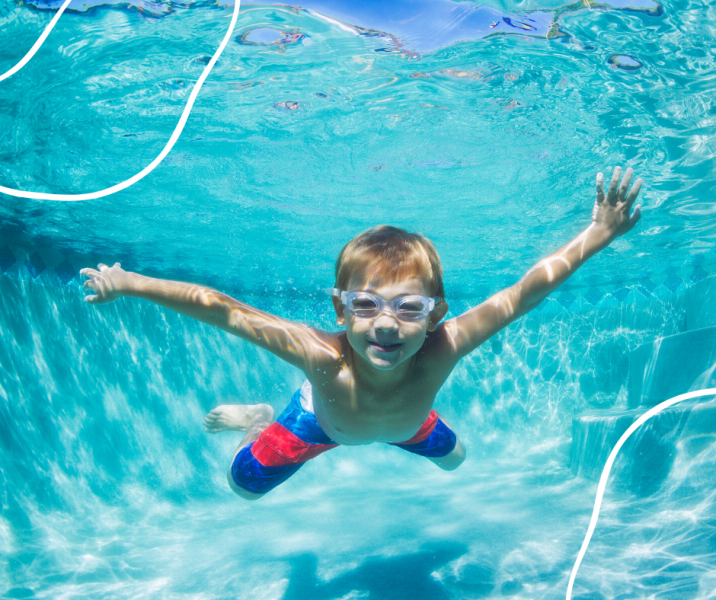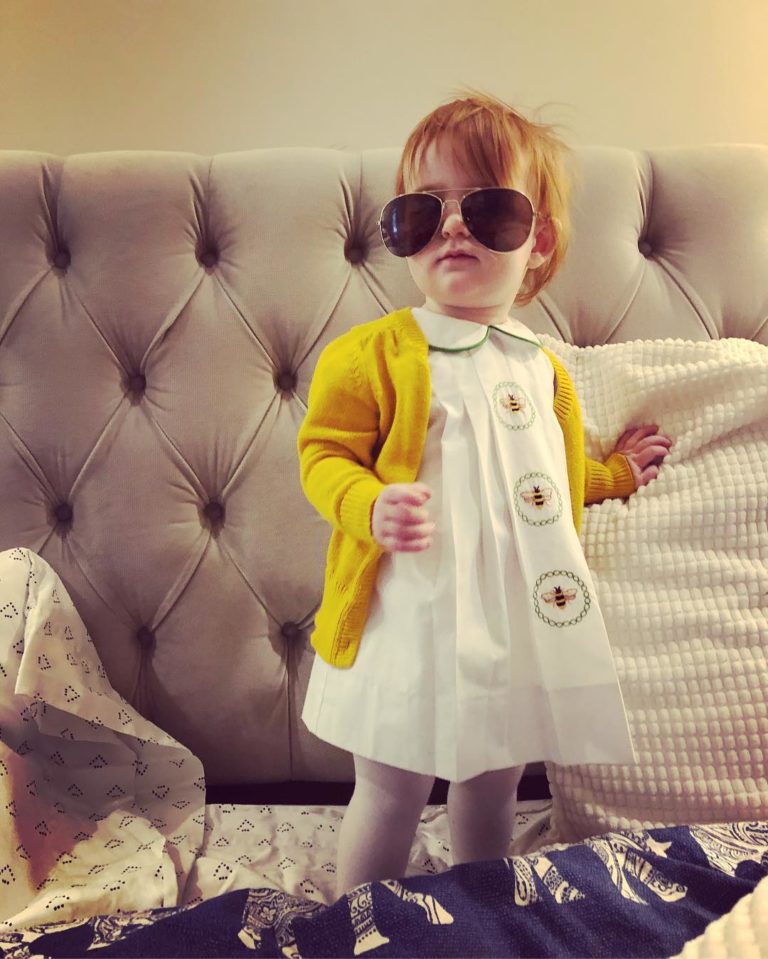The Truth about Drowning and How to Keep your Kids Safe this Summer
It was a day like any other; a friend had invited me and a friend over to swim with all of our kids. Two weeks prior, my children had taken swimming lessons, where my ever-cautious, anxious child FINALLY put his face in the water for the first time.
As a kid who spent every single summer in the pool, I was anxious for my kids to have the same summer fun that I remembered so well.

So when my super cautious child begged to sit in the shallow end without a life vest, I didn’t want to be that mom. I was standing right next to him, so I told him it would be ok. I was doing my pool scans every few seconds, listening and watching him, and standing right next to him in the pool. He could touch the bottom and was walking to me and then back to the wall over and over.
After chatting with my friend for a minute I had this eerie feeling. Then a panicked thought ran through my head – “Where’s Levi?” At the same moment, I heard a little girl say, “Blow your bubbles, Levi!” After you’ve been going to swim lessons, you know that blowing bubbles is something you do with your face IN the water.
I looked over my right shoulder and saw that my son had drifted to the deep end of the pool and sunk to the bottom. I could see his still body at the bottom and his arms floating upward. I reached over and put my arms under him, pulling him up. His body was limp and his lips were purple. I will never forget the way his neck rolled unnaturally as I pulled him out.
I set him on the side of the pool and put my fist to his chest as I screamed his name. Suddenly, life came into his eyes and a burst of water came out of his mouth. He went into hysterics, screaming and coughing and crying.
We spent that night at the hospital, getting x-rays and monitoring his vitals. It was there that the nurses told us a staggering statistic:
Drowning is the leading cause of accidental death among young children.
The mom of the young boy in the room next to us had to do poolside CPR for 5 minutes before her son expelled the water. My friend’s husband had to do CPR on their 3 year old daughter after they found her floating. My co-worker had a 4th of July pool party when a 2 year old fell into the pool unnoticed. His grandfather performed life-saving actions after he was found unconscious and floating. These stories are nearly endless, and these are the ones that ended well.
Take it from a mother who’s been there, who has almost had her worst nightmare come true – water is extremely dangerous. I never wanted my kids to be afraid, but now I know that a healthy fear is necessary to their survival.

Drowning isn’t loud. In the movies, the person flails, gasps for air, and screams for help. When a child drowns, their legs aren’t strong enough to kick them up for that gasp, and their cries go unheard under the weight of the water.
Drowning is nearly silent. There’s no splashing, no yelling, no big scene. It is disturbingly inaudible.
The silence doesn’t end there. Parents who have experienced this feel such incredible shame. As the protector, keeper, mother, we are supposed to be there for our children, and when we fail, it is suffocating. So we stay quiet. After that day I couldn’t even say the word “drowned” without crying. I didn’t want to tell my story, I didn’t want anyone to know how badly I had messed up.
Yet the more I share, the more I hear from other parents that they have gone through the same thing. They wish someone would have said something. They wish someone would have spoken up. I share my story because I hope it can spare one family from going through what we went through, or maybe even worse.
The good news is that experience is the greatest teacher, and there are things you can do to make sure water time stays fun and safe.
-
Designate a water watcher
If you are at a large gathering with a pool, don’t make any assumptions that someone is watching the pool, or that somehow nothing will happen. Designate one person at a time to be the water watcher, and give them a physical token such as a lanyard to remember that it is their responsibility.
-
Be that mom
Be the mom who is overly-cautious. Be the mom who insists on the lifejacket. Be the mom who watches like a hawk. Be the mom without her phone. Be the mom who doesn’t care about anyone else’s opinion when it comes to water safety. Drowning happens in the blink of an eye. It happens when you step downstairs while your kids are in the bathtub or when you turn to answer a friend’s question. If you’re uncomfortable, say so.
-
Know what drowning looks like
Don’t judge, just listen. Listen to the parents that have been there and can tell you the signs that led up to a drowning incident. They may look different than you think.
-
Get swimming lessons/Get CPR Certified
If you plan on being in the water, invest in swimming lessons. You can get lessons for children as young as 1 year old! Many lessons are designed to help your child to react properly even when falling into a body of water accidentally. CPR has been known to save many lives. Get CPR certified and be prepared for anything!
-
Talk about it
Experience is so valuable. If you have experienced drowning and you are struggling, reach out. Contact me or someone you trust and tell them your story. You could be saving a life.










